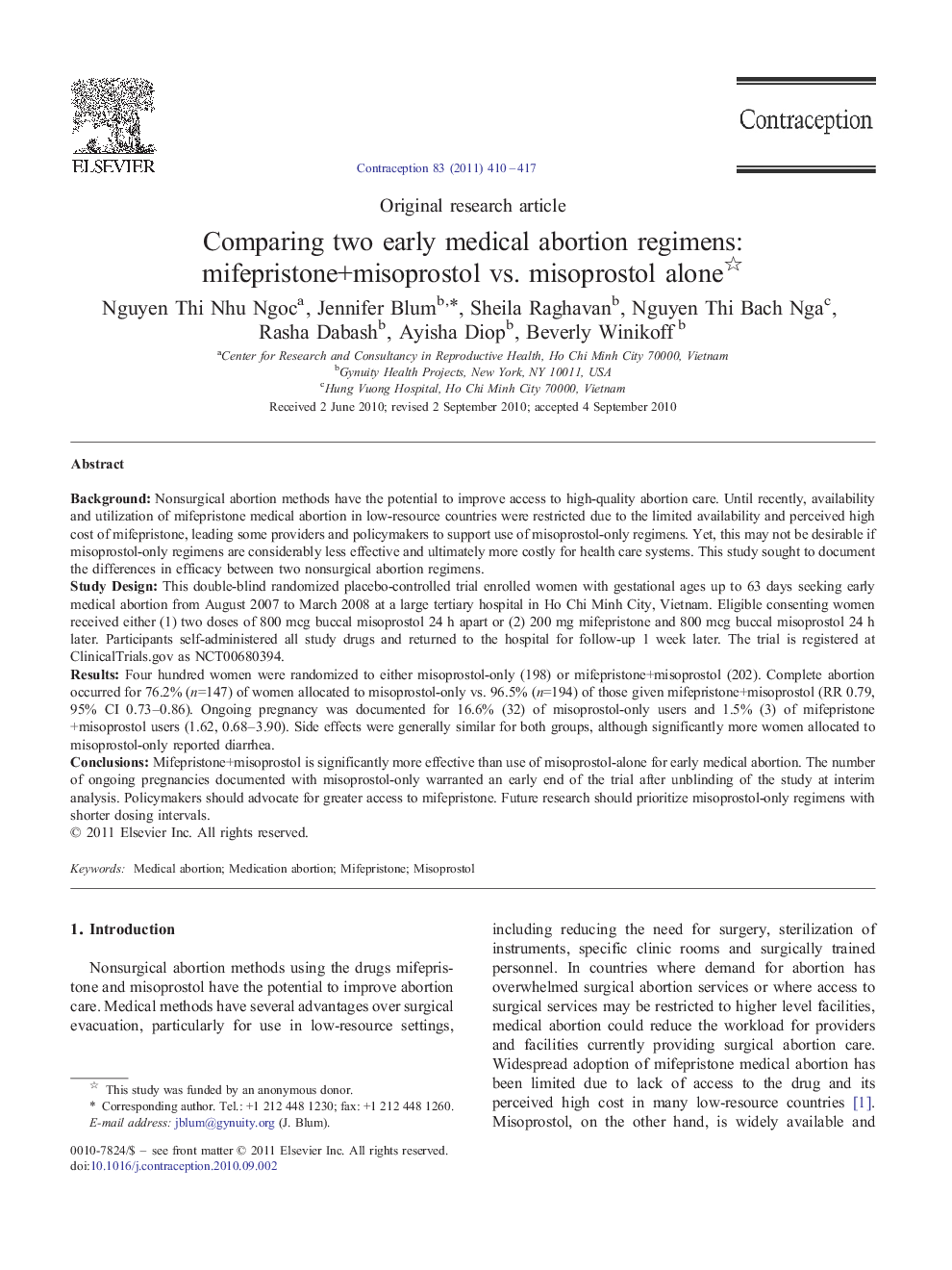| Article ID | Journal | Published Year | Pages | File Type |
|---|---|---|---|---|
| 3914049 | Contraception | 2011 | 8 Pages |
BackgroundNonsurgical abortion methods have the potential to improve access to high-quality abortion care. Until recently, availability and utilization of mifepristone medical abortion in low-resource countries were restricted due to the limited availability and perceived high cost of mifepristone, leading some providers and policymakers to support use of misoprostol-only regimens. Yet, this may not be desirable if misoprostol-only regimens are considerably less effective and ultimately more costly for health care systems. This study sought to document the differences in efficacy between two nonsurgical abortion regimens.Study DesignThis double-blind randomized placebo-controlled trial enrolled women with gestational ages up to 63 days seeking early medical abortion from August 2007 to March 2008 at a large tertiary hospital in Ho Chi Minh City, Vietnam. Eligible consenting women received either (1) two doses of 800 mcg buccal misoprostol 24 h apart or (2) 200 mg mifepristone and 800 mcg buccal misoprostol 24 h later. Participants self-administered all study drugs and returned to the hospital for follow-up 1 week later. The trial is registered at ClinicalTrials.gov as NCT00680394.ResultsFour hundred women were randomized to either misoprostol-only (198) or mifepristone+misoprostol (202). Complete abortion occurred for 76.2% (n=147) of women allocated to misoprostol-only vs. 96.5% (n=194) of those given mifepristone+misoprostol (RR 0.79, 95% CI 0.73–0.86). Ongoing pregnancy was documented for 16.6% (32) of misoprostol-only users and 1.5% (3) of mifepristone+misoprostol users (1.62, 0.68–3.90). Side effects were generally similar for both groups, although significantly more women allocated to misoprostol-only reported diarrhea.ConclusionsMifepristone+misoprostol is significantly more effective than use of misoprostol-alone for early medical abortion. The number of ongoing pregnancies documented with misoprostol-only warranted an early end of the trial after unblinding of the study at interim analysis. Policymakers should advocate for greater access to mifepristone. Future research should prioritize misoprostol-only regimens with shorter dosing intervals.
